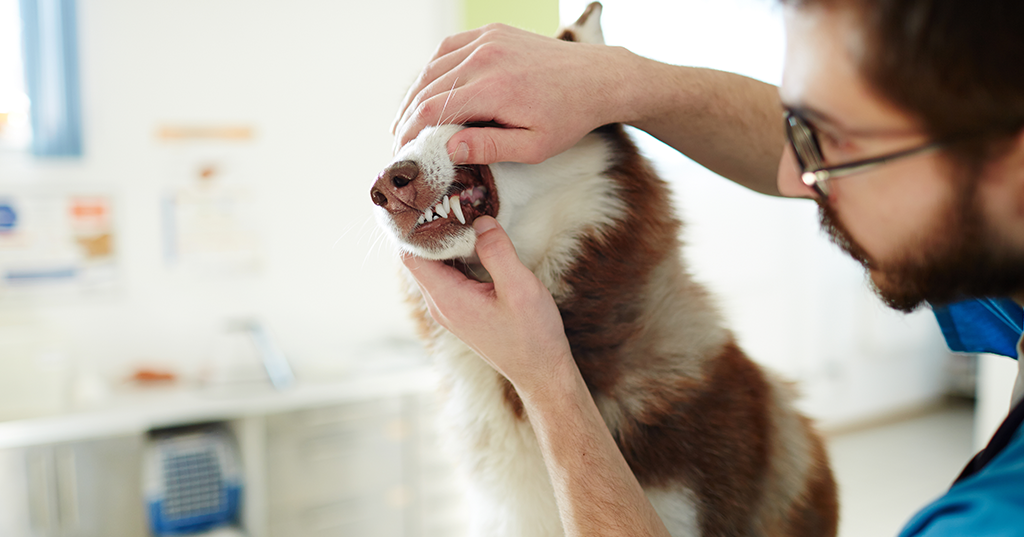Pets oral health is just as important as it is for the rest of your family. Your pets count on their teeth to eat and defend themselves. Problems with gums and teeth cause your pet discomfort and pain and put them at risk of developing life-threatening health problems. Make sure your pets oral health is perfect by taking good care of their teeth and understanding how to spot these common warning signs.
6- Bad breath
Okay, we know pets don’t always have the finest reputations for fresh breath. But if the odor isn’t straight related to something they ate, it can sometimes mean that plaque and bacteria have built up in their mouths. This puts their teeth at risk of decay.
If their breath smells extremely foul like rotten eggs, this could signify that they have gum disease, which requires treatment from their vet. A study by the American Veterinary Dental Society found that 80% of dogs and 70% of cats have gum disease in some form by the age of three – the risk is higher for smaller dog breeds.
Keep in mind there’s more at stake than just stinky breath. Untreated gum infection can damage your pet’s teeth and jaws over time and is one of the major causes of tooth loss. Infections caused by gum disease have been linked with heart, liver, and kidneys conditions, so you should talk to your vet if you notice any unusual odors.
5- Changes in eating habits
Any sudden difference in your pet’s appetite is a reason for concern, especially when they don’t want to eat their ordinary food. Ignoring pets oral health my cause broader health concerns, gum disease signs (like infections or swollen gums) might cause a dog or cat to stop chewing or eating.
You should speak to your vet immediately if your furry friend’s appetite has changed – especially if there have been no significant changes to their diet.
4- Yellow or brown teeth
If you notice brown or yellow stains, specifically around the gums, there’s a chance it’s a pets oral health issue. Feeding your pet’s dental treats and brushing their teeth with special toothpaste can help prevent plaque build-up.
Existing tartar and plaque need to be carefully removed by a vet to decrease the risk of your cat or dog getting tooth decay.
3- Swollen or bleeding gums
Bleeding and inflamed gums can be symptoms that your pet has gum disease or other infection, which may lead to discomfort in their jaws or toothaches. Your vet can interpret the cause of the problem and suggest a treatment involving scaling and cleaning their teeth to remove bacteria and plaque. Sometimes animals will need to have a tooth, or some teeth pulled.
2- Growths on the gums
If you spot any unexplained growths or lumps anywhere on your pet, you should schedule an appointment with your vet. Growths on the gums can sometimes be malignant tumors that need removal, which could involve pulling some teeth also.
If you clean and check your pet’s teeth daily, you’ll be more likely to see unusual changes at an early stage when they’re usually easier to treat.
1- Excessive drooling
For some dog parents, drool is just a messy part of life! Most dogs drool and some species drool a little extra.
But if your dog unexpectedly starts drooling more than usual, you should take note. This might mean they have a health issue that’s either causing them to produce more saliva or preventing them from swallowing their drool like they usually would.
This could mean various pets oral health problems, including gum disease, loose teeth, or a dental abscess caused by bacteria or injury. If your vet discovers an abscess, they’ll usually suggest pulling the tooth and/or specifying a course of antibiotics to clear the infection.
How can I look after your pets oral health?
Caring for dogs, cats, and other pets oral health isn’t so different from looking after your oral hygiene. You can look after their oral health by ensuring they eat a healthy diet, clean their teeth daily, and schedule regular appointments with a local vet. But, just like us, many animals are at a higher risk of dental issues as they get older.
There are numerous types of dry foods invented to help clean your pet’s teeth, often using a variety of “scrubbing” that happens while they chew – talk to a vet about which choice is best for your pet. Try to brush your pet’s teeth every day, using toothpaste and toothbrushes designed specifically for their size and breed. Note: you should never use fluoride toothpaste on animals or other hygiene products designed for humans.
